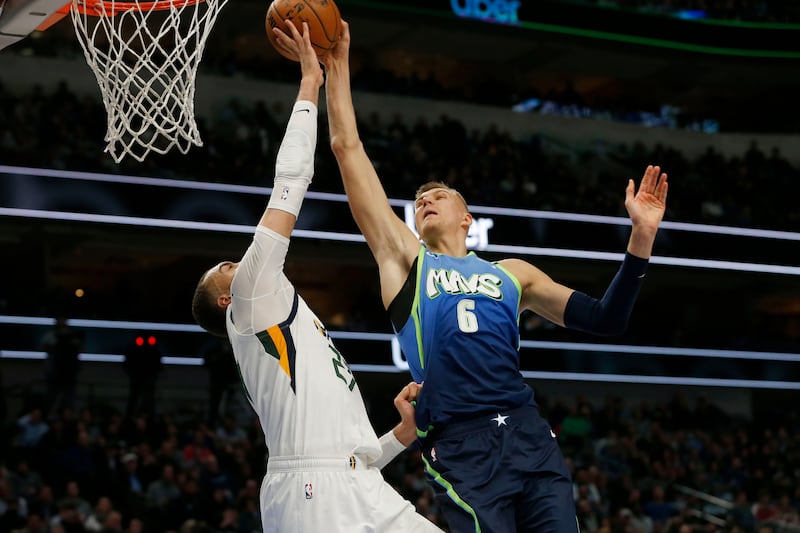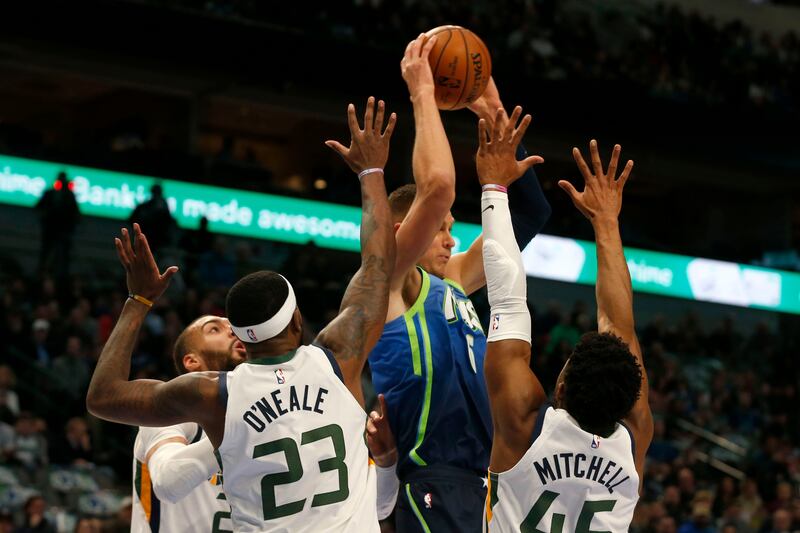DALLAS — Prior to the most recent two games, against the Houston Rockets and the Dallas Mavericks, the last time the Utah Jazz held an opponent to less than 10 second-chance points was on Jan. 20 when they held the Indiana Pacers to four.
On Sunday and Monday nights the Jazz held the Rockets and Mavericks to two second-chance points each. That’s just one bucket apiece.
Both of those teams are in the top 10 in the league in offensive rebounding and the Mavericks average the third-most second-chance points in the the NBA at 14.7 points per game.
Let’s take a minute to talk about second-chance points.
It should be a self-explanatory statistic, but for the more casual basketball fan here’s a short explainer (skip the next paragraph if you don’t need the explanation):
A second-chance point is a score after the defense had an opportunity to take possession but failed to. Usually it’s offensive rebounds that result in second-chance points. There are a few more nuanced and rarer instances that can lead to a second-chance point, but we’ll just leave it at that.
(Basketball nerds are welcome to start reading again.)
“It’s an impressive feat to limit a team to just one second-chance bucket, and to have the resilience to do it on the second night of a back-to-back, when Rudy Gobert sees foul trouble and a portion of the weight is thrust onto Tony Bradley’s shoulders.”
Overall the Utah Jazz are fourth-best in the league at limiting opponent’s second-chance points (12 points per game).
It isn’t because Jazz opponents shoot well and the offensive rebounding opportunities aren’t there. The Jazz have the 10th-best opponent field-goal percentage, so teams are missing shots, but usually they aren’t capitalizing on them.
It all starts with limiting the opposing team’s chance at and offensive board and if that fails then it turns to defending through the extra possession. The Jazz are already good at limiting offensive rebounds, sixth in the league at 9.5 per game, but they have slipped recently — both in limiting teams on the offensive glass and defending through second-chance possessions.
It’s an impressive feat to limit a team to just one second-chance bucket, and to have the resilience to do it on the second night of a back-to-back, when Rudy Gobert sees foul trouble and a portion of the weight is thrust onto Tony Bradley’s shoulders.

Let this sink in:
Tony Bradley had more offensive rebounds (6) than Kristaps Porzingis did total rebounds (4).
It was an effort that did not go unnoticed. Not only did the Jazz coaching staff comment on Bradley’s effort after the game, but before the final buzzer sounded, a member of the Mavericks coaching staff stood next to their bench holding a box-score exclaiming about the disparity of the teams second-chance points.
“We only had two second-chance points?” a Dallas assistant coach said. “Two? And they have 13. What’s wrong with this picture?”
You can’t really ask for a better reaction to a stat line by the competition than that.
A team that had been off track recently should be commended for going on the road for the second game in as many days and for keeping the opponent relying squarely on what it can generate through a one-shot, one-chance offense.
That’s the kind of mindset that this team needs to have going into Wednesday’s game against the Miami Heat, and it’s the kind of thing the Jazz should be striving for throughout the rest of the season.


